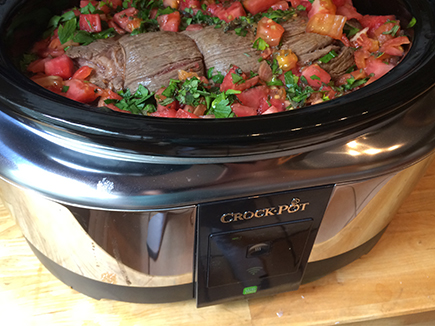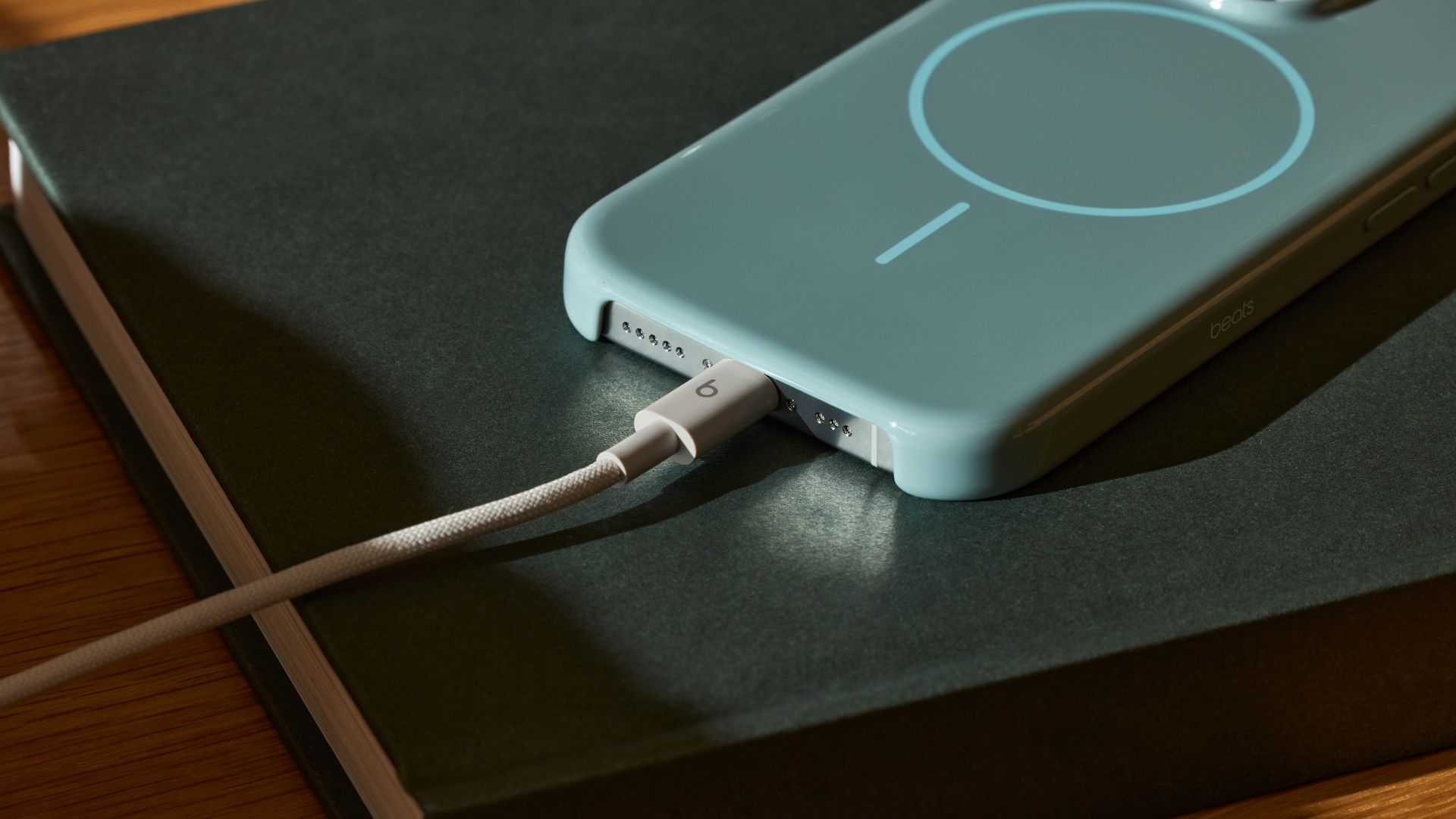Tom's Guide Verdict
The Crock-Pot Smart Slow Cooker lets you control dinner from afar, but the high price isn't very appetizing.
Pros
- +
Attractive design
- +
Easy to clean
- +
Can control cooker from your phone or tablet
Cons
- -
Expensive
- -
Faint burning plastic smell
Why you can trust Tom's Guide
You can control your lights, thermostat, TV, window shades and garage door with your smartphone, so why not your kitchen appliances? That's the thinking behind the $129 Crock-Pot Smart Slow Cooker with WeMo. Powered by Belkin's WeMo technology, you can turn the temperature up or down on your roast from afar — which is great if you're stuck at the office and don't want to overcook your dinner. But is this convenience really worth spending more than twice as much as you would on a traditional slow cooker?
Design
The chrome exterior of the Crock-Pot shone brightly in my kitchen, and its black plastic trim completed the modern look. I especially liked that the black stoneware insert could be easily removed for cleaning, and that the glass lid let me check on the progress of my food.
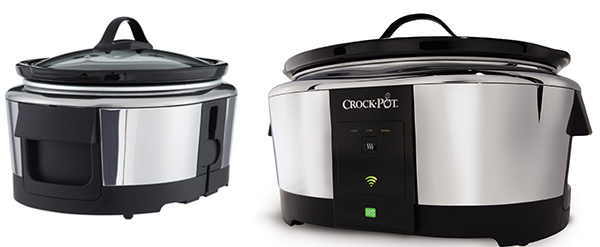
The front of the slow cooker has a button that lets you adjust the heat (High, Low, Warm, Off). Below that is an icon that shows the status of the unit's Wi-Fi connection.
At 17.4 x 13.9 x 9.6 inches, the Crock-Pot will take up a fair amount of space — I had a little trouble finding a place to store it in my apartment kitchen — but those with larger homes will have no problem stowing it.
MORE: 15 Amazing Smart Home Gadgets
Setup
After plugging in the slow cooker and downloading the WeMo app to my iPhone 5s (also available for Android and Amazon devices), I went into Settings and looked for the Crock-Pot's Wi-Fi signal. After connecting, I then configured the cooker to connect to my Wi-Fi network. In all, setup took about 5 minutes.
App
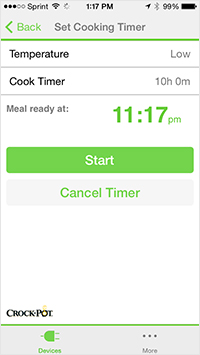
The Crock-Pot uses the same app used to control all WeMo devices. The home screen of the app shows which devices are connected, and a More button at the bottom brings you to a page where you can change settings, get help and set up additional devices.
As there's not many controls on the cooker, there's not many controls on the app itself. You can change the setting to High, Low, Warm or Off, and you can set a timer for cooking duration and temperature.
You can also connect the app to IFTTT. For example, you could have the Crock-Pot turn on automatically when the Eagles-Giants game starts, and switch to Warm if the game goes to overtime.
MORE: How the Internet of Things Could Kill You
Performance
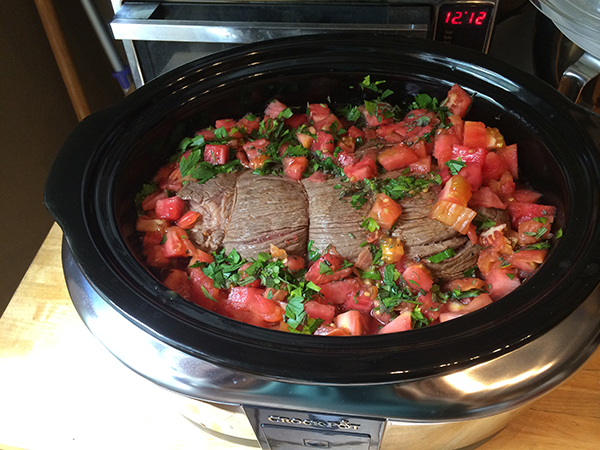

What more can you say about a Crock-Pot than it cooks your food well? The slow cooker itself holds up to 6 quarts; I was able to comfortably fit in a 5-pound roast, but a pork shoulder proved a tighter squeeze.
Friends who came over to my apartment immediately noticed the fragrant aromas coming from my kitchen, and kept asking when we would be able to eat. However, the first Crock-Pot Belkin sent me had a different aroma altogether: When I plugged it in and turned it on, there was a strong smell of melting plastic. The second Crock-Pot I received also gave off a faint odor of burning plastic but was much less noticeable, and faded after a while.
Bottom Line
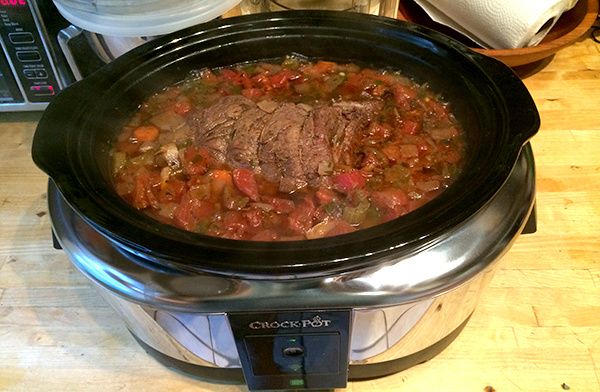
Does anyone really need a Crock-Pot you can control with your smartphone? Perhaps not, but there are a few instances when I could see it being useful. If you're detained at work and need to shut the device off from afar, or want to have it start after you've left for work, a connected Crock-Pot is just the thing for you.
At $129, however, the Crock-Pot Smart Slow Cooker is at least twice as expensive as a similarly sized slow cooker, so you really need to want this feature to justify buying it. Ultimately, this gadget is a fun amuse-bouche of where connected home technology is headed, but I'm still waiting for the main course.

Michael A. Prospero is the U.S. Editor-in-Chief for Tom’s Guide. He oversees all evergreen content and oversees the Homes, Smart Home, and Fitness/Wearables categories for the site. In his spare time, he also tests out the latest drones, electric scooters, and smart home gadgets, such as video doorbells. Before his tenure at Tom's Guide, he was the Reviews Editor for Laptop Magazine, a reporter at Fast Company, the Times of Trenton, and, many eons back, an intern at George magazine. He received his undergraduate degree from Boston College, where he worked on the campus newspaper The Heights, and then attended the Columbia University school of Journalism. When he’s not testing out the latest running watch, electric scooter, or skiing or training for a marathon, he’s probably using the latest sous vide machine, smoker, or pizza oven, to the delight — or chagrin — of his family.
-
ickibar1234 There is an efficiency problem I see with slow cookers even today. At least the dummer ones. They are not insulated by anything more than the glass dish and the thin metal chassis of the cooker. You can tell if it's not insulated if the outside of the pressure cooker becomes hot to the touch even on the low setting after a while. It's a waste of energy.Reply
I hope this smart slow cooker is insulated. Really all new ones should come with a sensor to regulate temperature instead of relying on heat loss to keep it around where it should be. -
ickibar1234 There is an efficiency problem I see with slow cookers even today. At least the dummer ones. They are not insulated by anything more than the glass dish and the thin metal chassis of the cooker. You can tell if it's not insulated if the outside of the pressure cooker becomes hot to the touch even on the low setting after a while. It's a waste of energy.Reply
I hope this smart slow cooker is insulated. Really all new ones should come with a sensor to regulate temperature instead of relying on heat loss to keep it around where it should be. -
mprospero For those who are interested, here's the full recipe:Reply
5-pound pot roast or chuck roast
One 16-ounce can or three large diced tomatoes
One Vidalia onion, diced
Two carrots, chopped into ½ inch slices
Two celery stalks, chopped into ½ inch slices
Four garlic cloves, chopped roughly
One handful of parsley, chopped
2 Bay leaves
1 teaspoon thyme
1 tablespoon oregano
2 cups of red wine
4 cups of chicken broth
1 tablespoon vegetable oil
Salt and pepper
Sprinkle roast on all sides generously with a mixture of kosher salt and pepper. In a pan on the stove on medium heat, heat oil, and sear the roast on all sides until caramelized. Remove the roast, and add onions, carrots, and celery to the pan. Saute until onions are translucent, and then add garlic until fragrant.
Next, put vegetables in the Crock Pot, along with herbs. Place roast on top, and pour tomatoes, red wine, and chicken broth around and on top of the roast. Add chicken broth last; stop adding broth if it looks like it will overflow.
Place lid on top, and set the Crock Pot to high. Let cook for at least 4 hours, or until the meat is tender enough to break apart with a fork.
Remove meat from Crock Pot, and tent with foil. Using a potato masher or immersion blender, break up the vegetables in the pot.
Remove half the liquid, and reduce in a pot on the stove. Slice meat, and ladle sauce reduction over slices. Serve with mashed potatoes. -
house70 From a cooking POV, I don't see the need for a Crock Pot, since at some point while preparing the meal you'd need a stove anyways.Reply
I'd rather invest in a good Dutch oven (cast iron) and get on cooking. Which is exactly what I did, anyways. -
mprospero @house70 - believe me, I've got a LeCreuset dutch oven and I love it, but I've found crock pots useful in two scenarios: if you don't want to heat up your house by using the oven, or if you want to leave your house and not keep the gas on. Plus, they're good for keeping things warm at parties, like cheese dips or meatballs.Reply
